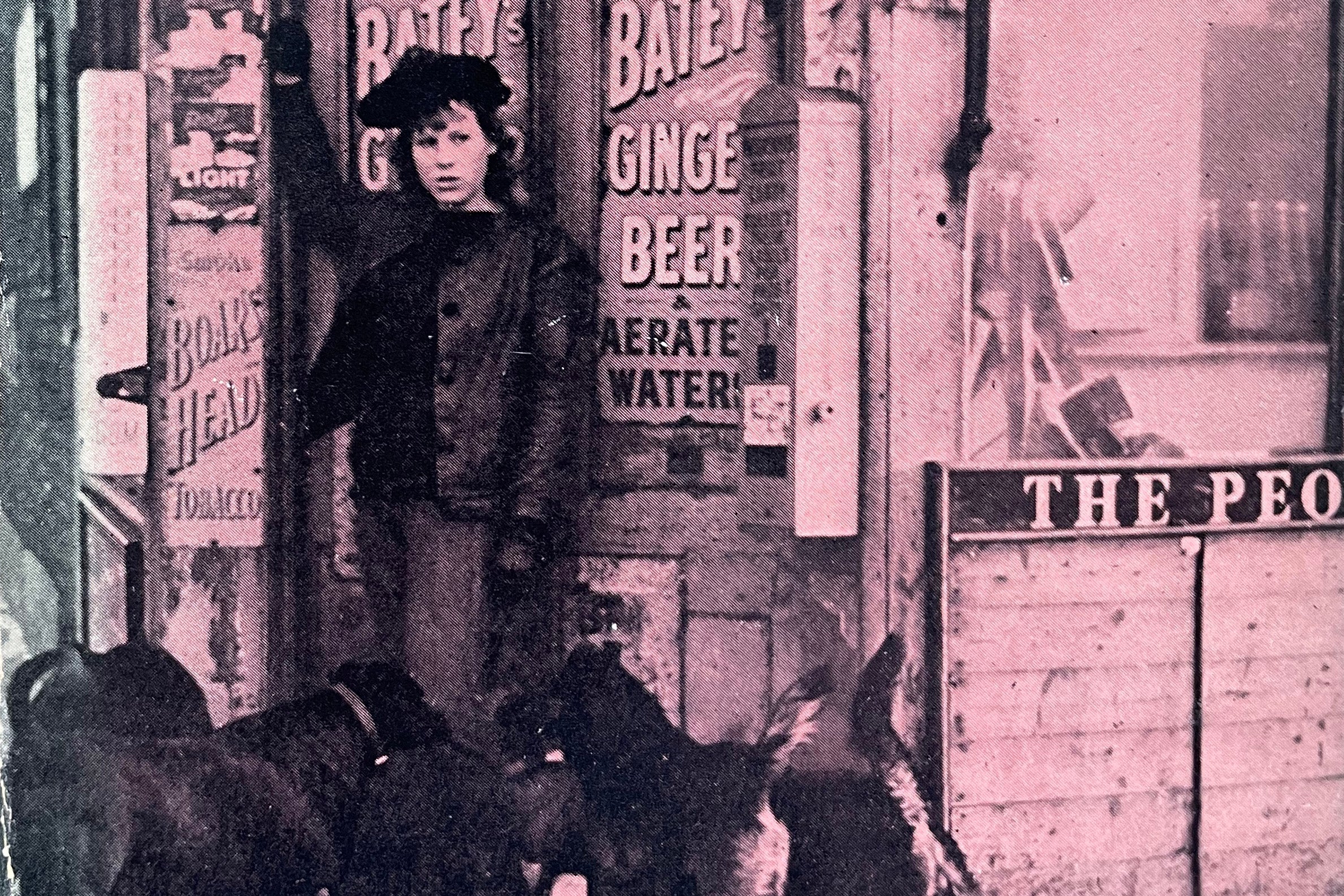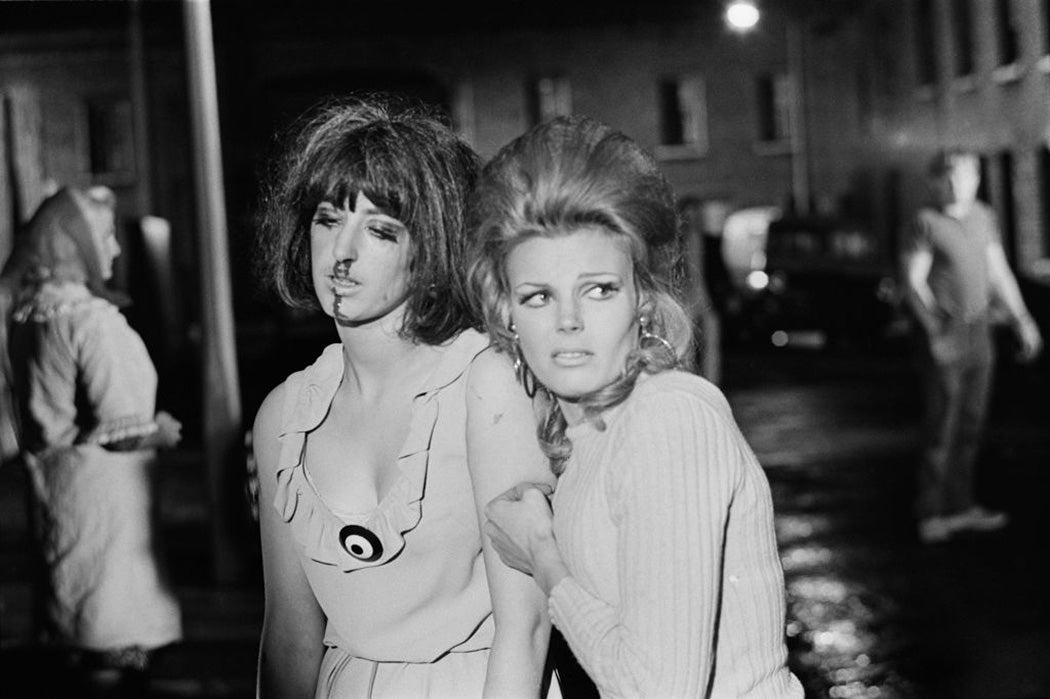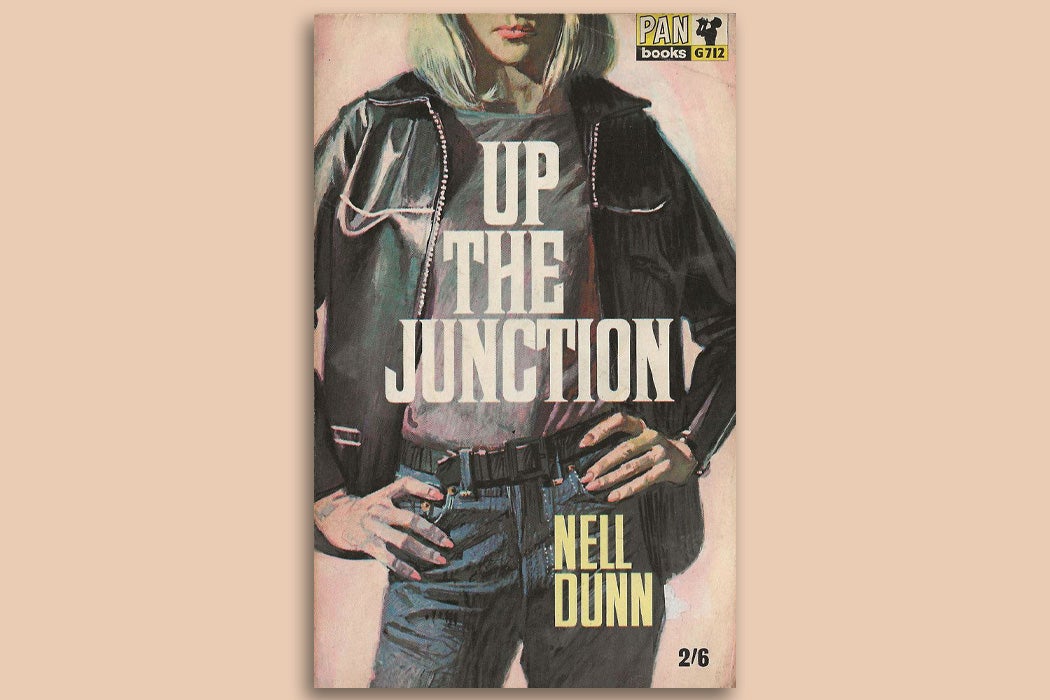If you think of the band Squeeze—the English rock group led by Glenn Tilbrook and Chris Difford, whose catchy New Wave/power-pop tunes first achieved prominence in the late 1970s—one of the first songs likely to come to mind is “Up the Junction,” which hit #2 on the UK charts in 1979. Difford’s lyrics (sung by Tilbrook) tell a wonderfully compressed tale of working-class life in south London: sex and romance, employment, marriage, pregnancy, parenthood, drinking problems, divorce, and self-defeating male loneliness—all in seven rapid-fire verses somehow packed into just over three minutes. Very unusually for a pop hit, the song has no chorus; its musical form, with verse tumbling after verse, Tilbrook has commented, was partly inspired by Bob Dylan’s “Positively 4th Street.”
“I never thought it would happen/ With me and the girl from Clapham,” the song’s narrator begins, instantly locating the song and its characters in a highly particularized milieu, that of the now-gentrified but longtime working-class Battersea neighborhood in south London, where the busy railway station Clapham Junction is located. He goes on to describe an assignation, presumably in Clapham Common, which borders Battersea and the more affluent neighborhood of Clapham. By verse two, “We moved into a basement/ With thoughts of our engagement.” In subsequent lyrics, the girlfriend gives birth to a baby girl who looks just like her. To support his new family, the protagonist gets an eleven-hour-a-day “job with Stanley,” who “said I’d come in handy.” All seems initially well with the little family. Soon, however, our narrator’s drinking and gambling alienate his wife, who leaves with the child. By the end, he is “Alone here in the kitchen/ I feel there’s something missing/ I’d beg for some forgiveness/ But begging’s not my business.”
The brilliantly crafted song, regularly punctuated by a memorable Jools Holland keyboard earworm, achieves its casually offhand tone partly through a frequent use of half-rhymes: “happen/Clapham,” “common/forgotten,” “Stanley/handy,” “kitchen/missing,” and so on. One of Difford’s most striking effects occurs in the song’s final lines, which at last, for the first time, deliver us the song’s title phrase: “And so it’s my assumption/ I’m really up the junction.” (This places “Up the Junction” within a select company of songs that deploy the rare title-phrase-in-final-line-only effect, including the Cure’s “Let’s Go to Bed” and Roxy Music’s “Virginia Plain.”)
But what does it mean, to a Londoner, to be “up the junction”? The phrase has two connotations: most literally, it suggests going to the area near Clapham Junction in Battersea. More metaphorically, “up the junction” means “in a tough spot; in a fix,” in trouble, roughly equivalent to the American phrase “up a creek without a paddle.” By association, it’s sometimes used to mean “pregnant.” This latter connotation connects to the specific inspiration for the Squeeze lyrics. As Helen Barrett points out, Difford as a child in 1960s “was drawn to television plays, among them a BBC adaptation of Nell Dunn’s Up the Junction. Directed by a young Ken Loach, it was a faithful retelling of the writer’s 1963 collection of short stories about the lives of three young women in a Clapham Junction factory.” Nearly 15 years later, Difford, “stricken by homesickness while touring the US, wrote the lyrics in one sitting in a New Orleans hotel room.” As Barrett observes, the lyrics don’t draw directly on Dunn’s plot or characters, “but they share a milieu;” the song’s male protagonist “could be Terry, Ron or Dave—the doomed, frustrated boyfriends of Dunn’s novel.”
Weekly Newsletter
Up the Junction may be best-known now because of the 1965 Loach adaptation (and the subsequent 1968 Peter Collinson-directed feature film version), but it’s well worth returning to the original. Jerry White, in “Unreal City: Reflections on London and the Novel in the Twentieth Century,” characterizes Dunn as possessing “one of the best ears for London dialogue of any novelist of the century,” and indeed, to read Up the Junction is to be plunged into an exuberant cacophony of London noise, sound, conversation, repartee, confession, insult, and song.
In an appreciation of Nell Dunn published in the Guardian, novelist Ali Smith observed that starting in the late 50’s, Dunn began writing fiction, composing short vignettes drawn directly from her experiences after she left the upper-class world of her upbringing in Chelsea and crossed the Thames to move to Battersea, where she took a job in a candy factory. Some of these short stories and vignettes eventually became the episodic Up the Junction. “Its subject matter,” Smith writes, “its sexual frankness and its marked unsentimentality, its refusal to provide any fake narrative payoff, and its revelation of working-class power—especially its portrayal of the forthrightness of working-class women— ignited a public reaction part scandalised, part ecstatic. It became a runaway bestseller.”
The novel’s narrator has (like Dunn) taken a job at a candy factory in Battersea. There she strikes up a friendship with two brassy young coworkers, Sylvie and Rube. In the opening story, “Out with the Girls,” the trio of friends is at a pub, where a group of boys chat them up.
“You come from Battersea, don’t yer?” a boy asks. “Yeah, me and Sylvie do. She don’t though. She’s an heiress from Chelsea,” is the reply.
In a 1987 introduction to a Virago Modern Classics reprint of the book, Adrian Henri describes the narrator as an “upper-class Candide wandering almost literally amongst an alien tribal society” but with “never a trace of condescension.” In a 2004 interview with the BBC, Dunn, now 87 years old, recalls “a tremendous sort of liveliness” in the world she was exploring, and describes her aim as “witnessing, without any judgment, what it was like…I had a sense of, almost of celebration of the liveliness.” The noisy urban life evoked in the book’s pages is often hilarious, sometimes tragic, occasionally cruel; it always rings true.
But what of the association of being “up the junction” with being or getting into trouble, and specifically with getting pregnant? Sally Minogue and Andrew Palmer, in their essay “Confronting the Abject: Women and Dead Babies in Modern English Fiction,” focus on Dunn’s groundbreaking depiction of out-of-wedlock pregnancy and abortion, considering how both Dunn and Alan Sillitoe (in his 1958 novel Saturday Night and Sunday Morning) updated conventions for the representation of such topics. For the first time, in the 1950s, Minogue and Palmer argue, authors like Dunn and Sillitoe were “able to invest abortion with a normality absent from the overheated, almost gothic depictions” of earlier fictional representations. Up the Junction, they write, depicts a “world in which pregnancy is a trial rather than a joy, where illegal abortion is a natural part of the culture, enabling girls to return to the source of true joy, sex.” There are, to be sure, moments of terrible pain in the book’s scenes of illicit abortion. But Dunn’s women are “pragmatic about the necessity of abortion, and in that they have achieved a female independence and confidence in their place in society.”

In 1965, the young Ken Loach adapted Up the Junction as a television movie for The Wednesday Play series on the BBC, to which he was a regular contributor. Jared Rapfogel recalls in Cineaste,
Loach exploded onto the scene with a series of teleplays that were radical both in content and form…. These films revolutionized the degree to which social realities could be explored on the small screen—above all Up the Junction…., with its frank depiction of extramarital sex, racism, and illegal abortion, and Cathy Come Home, whose shattering portrait of unemployment and homelessness led to a public outcry and Parliamentary debate. They also represented bold stylistic experiments, harnessing some of the aesthetic freedom and energy of the cinematic New Waves of the time, and switching freely between film and video, location- and studio-filming, and differing modes, from fiction to documentary to more Brechtian distancing devices.
Peter Collinson’s later, less memorable 1968 feature film smooths out the roughness and experimentation, producing a narrative that the late critic Leslie Halliwell hilariously summed up as: “An irritating heroine moves hygienically among motorbikes.” But Loach’s version, filmed on a small hand-held 16-mm camera that allowed for novel methods of documentary-style on-location shooting, is as edgy and cacophonous as Dunn’s text, feeling at once faithful to its source, yet also its own excitingly original work of art.
In “Up the Junction: Ken Loach and TV Realism,” Cecília Mello writes that Loach’s version “showed that perhaps English cinema needed television finally to embrace the subversion of film language pioneered a few years earlier by various ‘new waves’ across the world…. Up the Junction was an innovative film not only in the context of television dramas but also in relation to English cinema.” It was, she observes, “put together as a jigsaw of images and sounds, not strictly ‘to tell a story’ but to describe and comment on a world.” Just as Dunn’s novel is filled with scraps of popular songs and fragmentary anecdotes and overheard speech, “the film also incorporated the element of the document to its fiction, thus infusing it with the immediacy and direct contact with reality present in the world of the news.”

One of the film’s most joyful scenes depicts an impromptu break in the women’s workday at the factory. Chuck Berry’s “Sweet Little Sixteen” comes on the radio, and someone turns it up—Loach incorporates numerous scraps of early and mid-60s pop music, collaging songs with the film’s action in ways that one can imagine may have caught the attention of the apprentice filmmaker Martin Scorsese, working on his Master’s at NYU at the time—and the factory’s female workers, ranging in age from teenagers to grandmothers, all break out into an ecstatic dance. Eventually, the boss—a man—breaks it up, shouting, “Quiet! Quiet! Back to work, you women! What do you take this for, a nightclub or something?”
By the time Loach was filming, London was in the early phases of Beatlemania—we see the narrator, Sylvie, and Rube at one point strutting down a busy street, one of them pushing a baby carriage, while belting out the Fab Four’s “I Should Have Known Better.” One of the implications of Loach’s film, even more so than in Dunn’s earlier novel, is that London was in fact beginning to feel like a “nightclub or something”: a stage, especially for newly-enfranchised female consumers and citizens, for performance, play, pleasure.
But Loach’s Up the Junction also doesn’t shy away from the subject, so central to Dunn’s plot, of dangerous—because illegal—abortion. In what might be the film’s most Brechtian scene of radical sound-and-image collage, we see the seventeen-year-old Rube end her pregnancy with the help of a chain-smoking older woman who performs the task for a payment of four pounds after greeting her cheerfully, “There’s only one reason why good-looking young girls come to see Winnie!”
As Clair Wills comments in her recent essay “Quickening, or How to Plot an Abortion,” “This is a case in which it mattered a lot how the abortion story was told. Loach avoided straight realism, mixing in documentary techniques, including a voiceover interview with a GP during the abortion scene.”
An ashen-faced Rube walks through the woods following the surgery, with a jumble of voices mixing comments from her unsympathetic boyfriend and family members with the documentary clip of the physician discussing the risks of backstreet abortions. We then cut to Rube in her bedroom, with closeup shots of her sweaty face screaming in pain at after-effects of the procedure. As Loach keeps the camera close on her anguished face, shaking from side to side, we hear the doctor’s voice:
“Take the lowest figure: 52,000 abortions a year. That’s 1000 a week—something like five or six every hour of every day. And that’s the minimum figure.”
Loach then joltingly cuts the soundtrack to Ben E. King’s uplifting “She Said Yes,” and to Rube walking again through the woods; on the street chatting with friends, and in a loo fixing her makeup. Loach’s film “helped bring about the 1967 Abortion Act,” Wills observes. “Viewers—and there were ten million of them—were forced to see Up the Junction’s storyline as a public health matter, and it became part of a political campaign.”
“I think I’m up the spout,” Rube tells her friend in Dunn’s original before they visit the abortion provider. Up the spout, up the junction: these colloquial phrases for “pregnant,” in trouble, can sound and mean very differently in different contexts. To have an undesired pregnancy in England before 1967, as in most of the world, was to be at great risk. But one story Dunn’s novel and Loach’s film tell is, as Minogue and Palmer argue, one of a neutralizing of abortion’s longstanding “gothic” associations, a new insistence on the procedure’s “normalcy.” In Dunn’s book, “for once the working class woman has a position of power, to decide without sentimentality or, indeed, society’s opprobrium, the fate of her unborn child.” Partly with the help of fictional narratives like Dunn’s and Loach’s, abortion was beginning to become “a natural part of the culture.”







